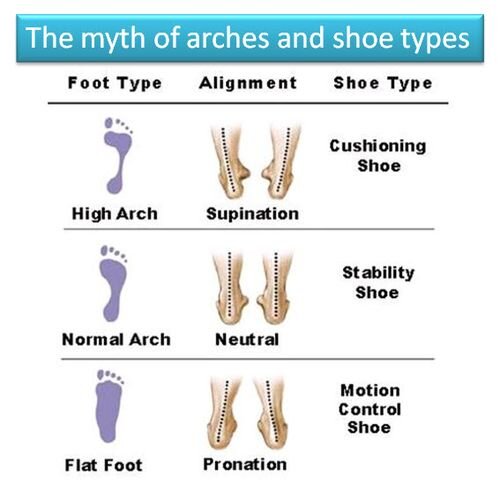How to Select Running Shoes
As a physical therapist, runner, and footwear product tester, I love helping clients find the perfect pair of running shoes. With so many different brands, technology, and terminology these days, it’s difficult for runners to find their ideal pair without feeling completely overwhelmed.
For decades, the running shoe industry has fitted runners for shoes based on their foot type (low, medium, to high arches) and amount of pronation. Pronation is simply the degree of arch collapse upon impact. Too much arch collapse (or rolling in of the foot) puts you in the "stability" shoe category. Excessive rolling in of the arch puts you in the "motion control" category.
The foot is an extremely unique and complicated structure with 28 bones, 30 joints, and 100+ tendons and ligaments. The way someone uses their foot during running is a unique blueprint. From a physical therapist’s standpoint, the amount and rate of pronation doesn’t always come from the foot. Oftentimes, instability of the hip musculature can contribute to excessive pronation in the foot and ankle. Even so, pronation is a natural movement of the foot and is not always something that needs to be “stabilized” or corrected. Dr. Benno Niggs’ Human Performance Lab found no correlation between 1) foot pronation and injury risk and 2) putting pronators in a stability shoe reduces injury. Because there are so many elements that contribute to someone’s movement mechanics, there is no perfect algorithm to recommend footwear.
My best advice - find the shoe that feels most natural to you when you run. Cycle between different types of running shoes to challenge and strengthen intrinsic foot musculature. Go into a running shoe store and try on SEVERAL different shoes to find the most comfortable one that complements your feet.
Final Note: A running shoe should complement an already strong foot. Don’t expect a carbon plated shoe to do the work for you. Continue to improve foot mobility, strength, and stability with a physical therapist and a running shoe won’t make or break your performance.
For more information on different running shoe specs, check out my article on: Footwear Science for things to consider when buying running shoes



